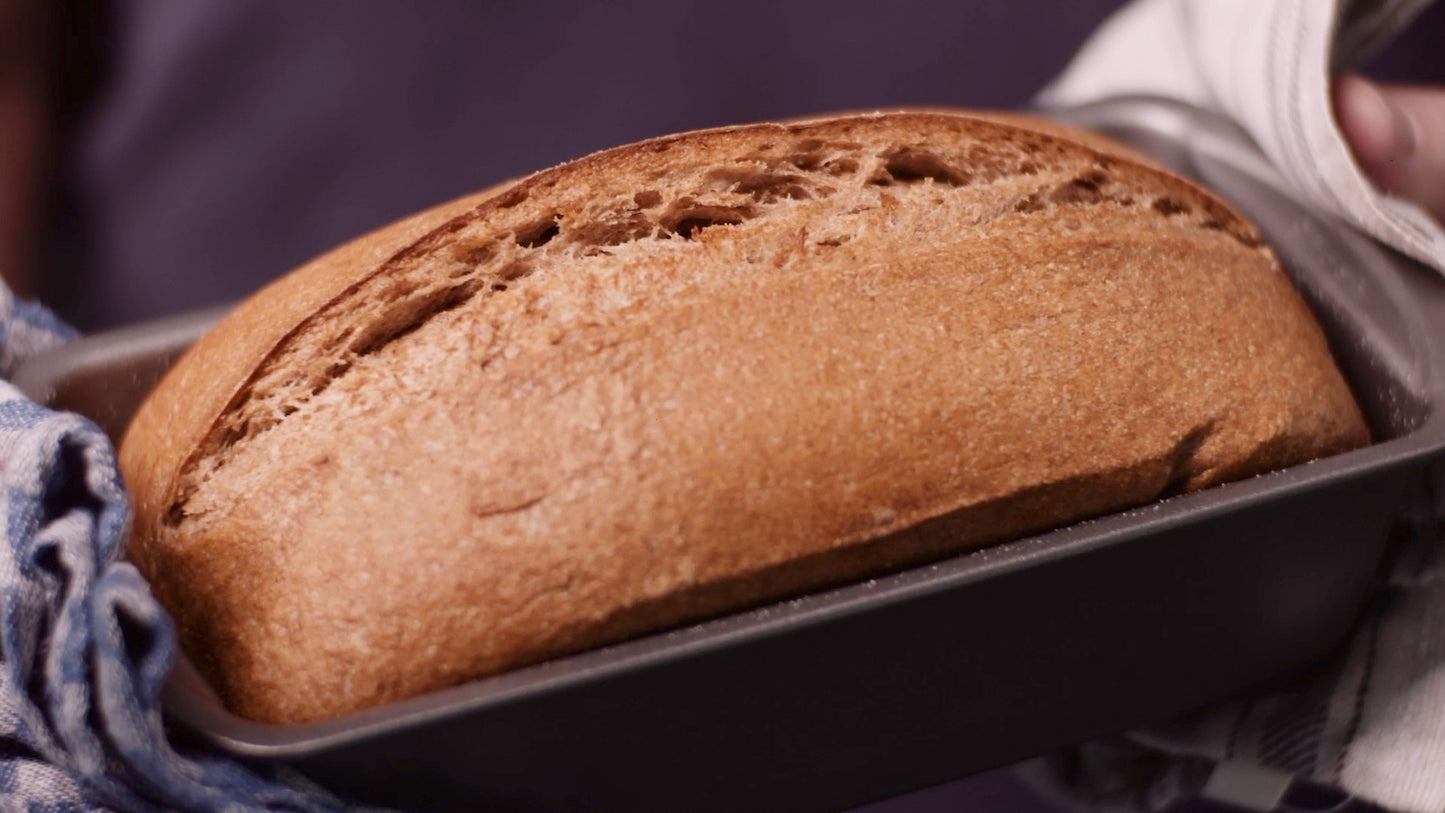
This loaf uses a little less levain than what we normally put into a free formed battard. If you don’t already have a starter, ask around for some discard from someone else’s established starter.
Feed your starter 12 hours prior to mixing up your dough. Adjust that time if necessary depending on how quickly your starter reaches peak activity, potentially longer if in a cold climate and shorter if the weather is hot. If your starter has been hibernating in the refrigerator, feed it 36 hours before you plan to make your dough, then again 12 hours before making the dough.
Here are the components that go into our sourdough feeds. Generally we use a clean glass container for every feed, finding it much easier to deposit 25g of starter into a new vessel than trying to excavate spent starter to leave just the right amount behind. Using fresh, clean containers for each feed generally makes measuring, mixing, and dispensing easier.
Scroll down for the written recipe.
INGREDIENTS, STARTER (for one 1kg flour batch of dough)
Mature starter (fed 24 hours ago or from refrigerator hibernation) 25g
Cool water 100g
Bread flour 100g
Rye flour 25g
When working with natural levain it can be handy to measure ingredients in three bowls; one large bowl for the flour and dry ingredients, one medium bowl for the water and levain, and one small bowl for the salt.
INGREDIENTS, BREAD DOUGH (makes two loaves)
Whole wheat flour 700g
Unbleached bread flour 200g
Rye flour 100g
Sugar 12g
Water (more for older flour or drier climates) 680-700g
Active starter (fed 12 hours prior) 200g
Salt 20g
Sunflower seeds optional
Measure out the flour and sugar into the large mixing bowl using a scale. Give the flours and sugar a quick mix to blend them all together.
In a medium sized bowl, measure out the water. Scoop out the active starter from its container and add it to the water, keeping an eye on the weight. Active starter, especially a starter containing rye, is pretty sticky so a water bath makes it easier to handle and add to the dry ingredients.
Pour the water and starter into the flour bowl and mix well with a wooden spoon. You can use your hands, wetting them before mixing, but expect to have a lot of dough stuck to your hands. When the ingredients are well mixed, cover the bowl with a lid, another bowl, a plate, or plastic wrap. Let the dough rest for 30 minutes and then add the salt and use the wooden spoon to press/mash/fold the salt into the dough. Let rest for 6-12 hours – longer when the temperature is cool and shorter when it is hot.
After the dough has fermented in bulk, scrape it onto a smooth surface that is very mildly wetted with water. Use a dough knife or large kitchen knife, also wetted with water, to cut the dough mass into two pieces. You can use a bowl and scale to measure the dough. Wet the bowl before adding the dough, measure, and even out the mass of the two dough chunks but cutting some from one and adding it to the other.
One at a time, spread the dough over the wet surface and perform and envelope fold with the dough. Flip the dough the seam side down, place one hand on the left side of the dough, and push the dough across the work surface from right to left with the dough scraper. Hold the dough scraper at about a 45º angle. The motion should force the left side of the dough underneath as the top surface is stretched and put under tension. After one push rotate the dough 90º and push again. Continue to push and rotate until the dough is more or less round in shape and sits high and ball-like.
Let the dough rest for 1 to 2 hours covered with a bowl or towels. When the dough has slumped somewhat, dust the top with flour – just enough to remove stickiness – and flip it over so that the wet side is up. Perform another envelope fold. If you are adding seeds, this is the time to add them, incorporating them as you fold the dough. If you want seeds or grains on the outside of the loaf, slightly wet the top of the formed loaf (opposite the seam of the envelope forming) and roll or press the loaf into the ingredients.
Place the formed loaf, seam side down, in a non-stick baking pan, either 8” x 4” or 9” x 5”. For extra insurance, wipe cooking oil or butter on the inside of the pan prior to leading it up. Wrap the baking pan in a towel and place it to rest in the refrigerator for 12 hours.
To bake, preheat your oven and Fourneau Grande to 475ºF. Insert the baking pan into the Grande and add water to the steamwell if desired. Bake for 20 minutes with the hatch closed. Bake for another 20-25 minutes with the hatch open or with the baking pan removed from the cloche and relocated to another spot in the oven. Finished, cooled loaves can be sliced and eaten fresh, refrigerated for toasting, or frozen for future use.

Fantastic web site. Plenty of usseful info here. I am sending it
to some pals ans additionally sharing in delicious. Annd
obviously, thanks in your effort! https://vavadacasino.onepage.website/